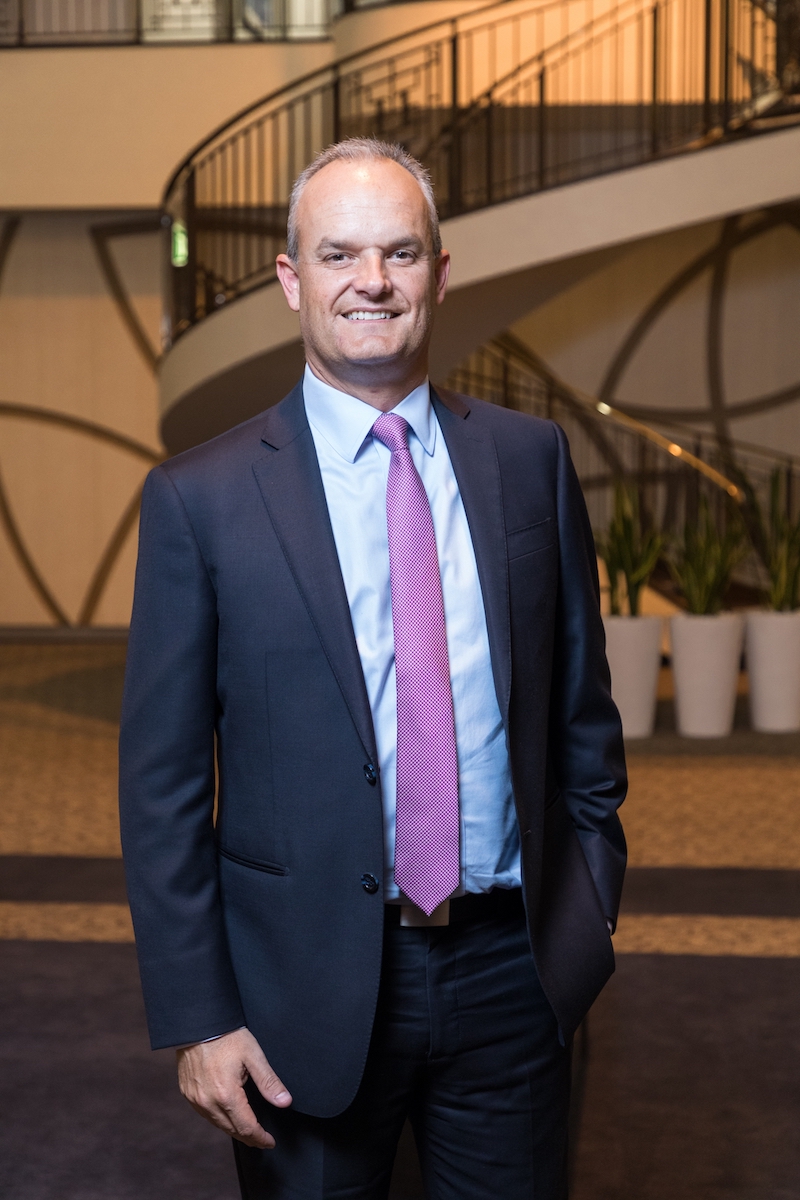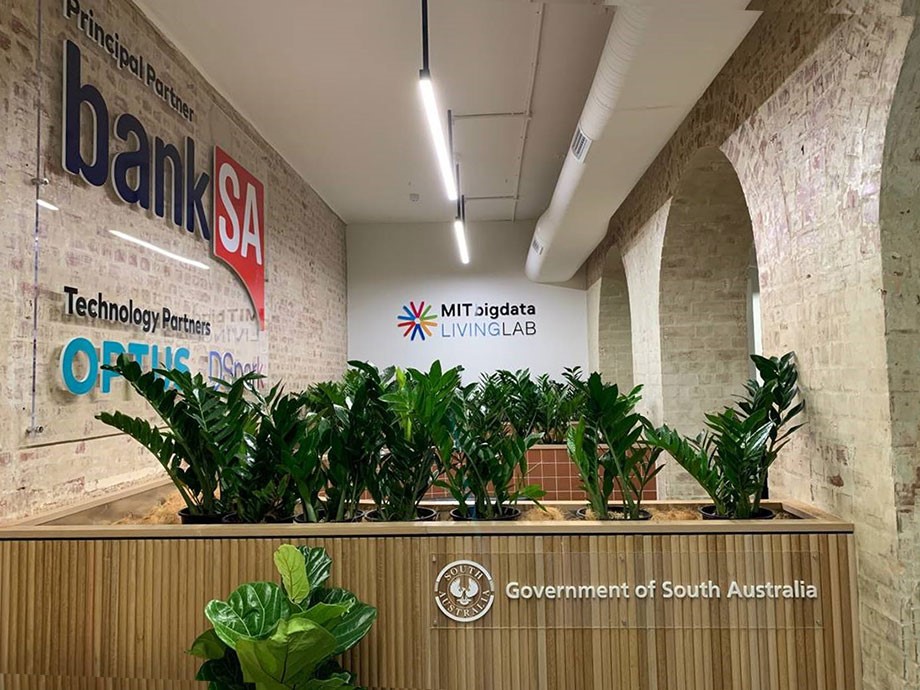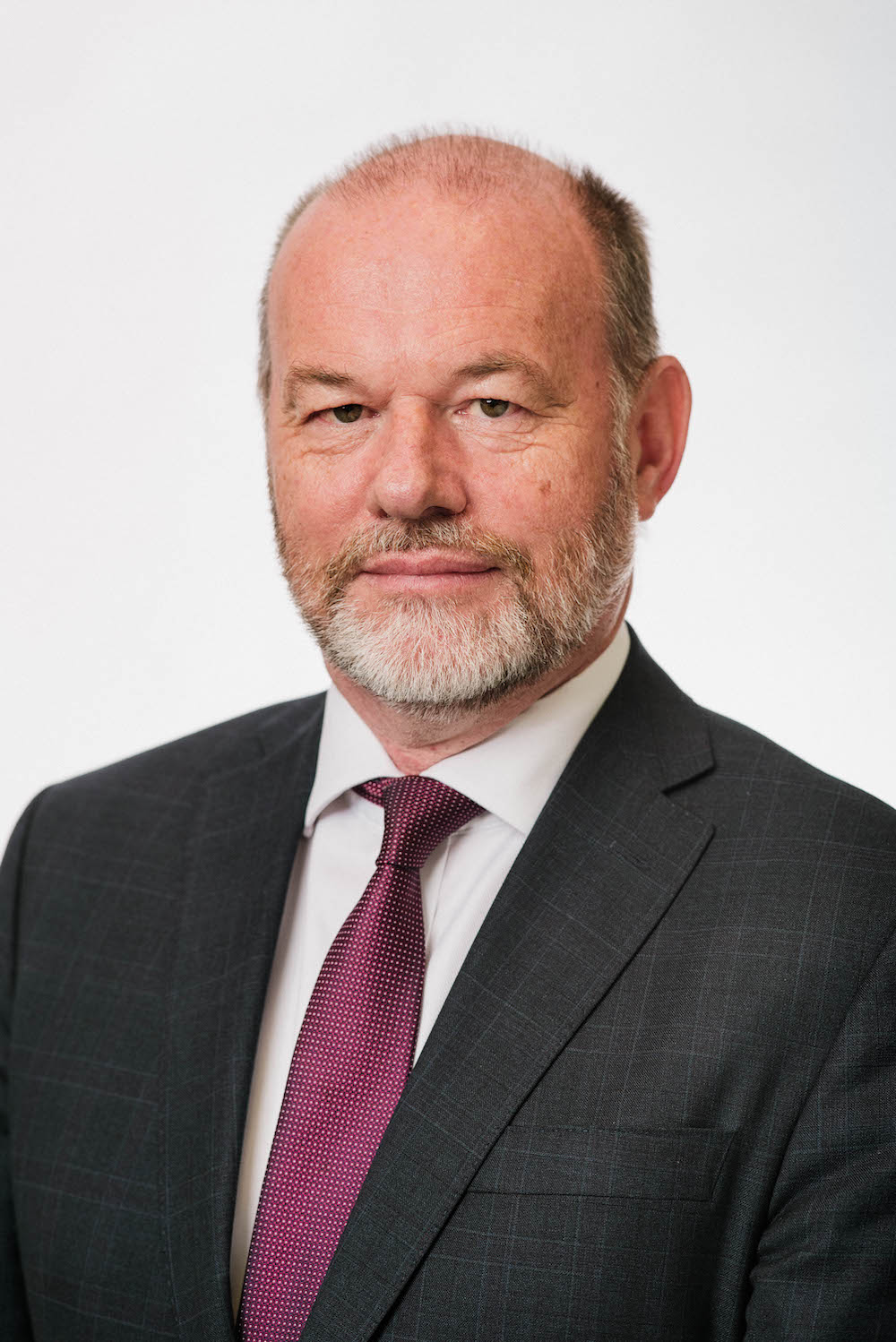LOT FOURTEEN
HI-TECH PRECINCT REACHING HEIGHTS OF SUCCESS
More and more tenants are taking up residency at Adelaide's Lot Fourteen
Lot Fourteen – hi-tech innovation precinct and home to the space industry in South Australia – is bursting at the seams with new tenants and undertakings as the final pieces of infrastructure for the project begin falling into place. The precinct, on the former Royal Adelaide Hospital site at the corner of North Terrace and Frome Road, is already the base for 869 knowledge workers, with that number expected to reach 6000 when physical redevelopment finishes in 2028. It is home to SmartSat Cooperative Research Centre, the Australian Space Agency, the Australian Institute for Machine Learning, and the Defence and Space Landing Pad, with a total of 37 established companies and organisations. And 44 start-ups are hosted at the Stone & Chalk hub, which is powered by the Future Industries eXchange for Entrepreneurship.
Work has been completed on the refurbishment of four heritage buildings on site plus the Sheridan Kiosk, already serving coffee and food to hungry workers. Work on the final heritage property, the Bice Building, is underway with strong interest from new tenants.
All of this means the precinct is becoming an ever-increasing magnet for new businesses and investment, creating hi-tech and related jobs for workers now and into the future. About 29 per cent of businesses on site are involved in the artificial intelligence and machine learning sector, while 24 per cent are in space and defence.
“It’s been pretty exciting: there just doesn’t seem to have been any stalling in the momentum that’s been built up at Lot Fourteen,” Di Dixon, state project lead Lot Fourteen, says. “We’ve seen an ongoing interest (and) companies starting up there are now looking at scaling up and potentially moving to other areas. It’s also the attraction of new businesses, creating high-value career opportunities and jobs in sectors in which SA has a global reputation and strengths.”
The focus is on hi-tech industries including cyber security, defence, space, and creative industries. Recently, Leonardo, a global top-10 player in aerospace, defence and security, moved to Lot Fourteen to work with SmartSat CRC and join the space ecosystem around the Australian Space Agency. “Because we have this base of research, intellect and sector strengths, other international companies are coming in,” Dixon says. “Leonardo is looking at how they can use that local expertise to develop new and competitive business opportunities.
“There is also LGM, a French engineering company which has come to the Landing Pad. They created five positions over the last year and are looking to build up to 20 to 25 around SA in the next three-to-five years. Companies can see the value proposition for themselves and it’s just going from strength to strength.”
AIML already has 120 researchers on-board, half of them PhD students at The University of Adelaide. One of the large infrastructure projects on site – the Entrepreneur and Innovation Centre – will become the centrepiece of the precinct. The 16-storey building will be a centre for fostering the next generation of businesses and jobs, all focused on defence, space and technology, and construction will start in the second quarter of 2021.
The ground and first floor of the building will be developed as an Innovation Hub to facilitate further investment and co-operation between companies, universities and researchers. It will offer event and meeting spaces, flexible workspaces, and shared and dedicated laboratories and is supported by up to $20 million from the Australian Government through the Adelaide City Deal. “We see that as the place everyone across Lot Fourteen will come to for events, to hang out and where that organic collaboration will happen with the mixing of disciplines,” Dixon says. “It will have high levels of security and future proofing so it’s attractive to global partners.”
The Lot Fourteen portion of the Adelaide City Deal, supported by the State and Federal Governments, totals $551 million and it will also support the Aboriginal Art and Cultures Centre and the International Centre for Food Hospitality and Tourism Studies to be built at the precinct. The former is being developed in partnership with Aboriginal people to tell the stories of the world’s oldest living cultures using the latest technologies. “We are looking at work potentially starting on site later next year and for an opening in 2025,” Dixon says.
The new cafe is already the place to get a morning coffee, healthy lunch or a drink after work with friends at Lot Fourteen. Led by manager Brett Hicks-Maitland and executive chef Sam Worrall-Thompson, the watering hole is part of the North Terrace interface, inviting the public to visit and take part in what is happening at the precinct.
Anyone can walk through the precinct and the public will be encouraged to visit Lot Fourteen attractions, including the Australian Space Discovery Centre, when it opens in the first half of next year. “We are also proposing to create a large central park, which will be available to the public and members of the Lot Fourteen precinct, offering open lawns, shady trees, playing areas for social sports, and water features, plus a central plaza to link the EIC to the heritage buildings and create a meeting place and venue for small events,” Dixon says.
So, the work continues as the Lot Fourteen team looks to the present and the long term, ensuring a pipeline of new companies, investment and job creation for coming decades.
BIG DATA
BIG DATA CREATES BIG RESULTS
MIT’s big data laboratory at Lot Fourteen is closer than ever to yielding results that will help grow the state’s economy
The Massachusetts Institute of Technology (MIT) big data Living Lab, based at Lot Fourteen in Adelaide, is just a few months away from its goal of using data generated from the everyday lives of South Australians and visitors to SA to help grow the state’s economy. The process is a clever collaboration between MIT, principal partner BankSA, Optus, DSpark and the State Government. “MIT is a fantastic partner to work with as they are a leading university in the world, a global leader in data science,” Nick Reade, chief executive of BankSA, says.
 With several MIT labs already operating around the world, Adelaide has not had to reinvent the wheel but can immediately take advantage of the powerful data tools MIT has produced elsewhere. The corporate partners in the project are providing their own expertise, as well as bank and telco customer data, all carefully washed of individuals’ personal details. Similar data from the State Government has been added to the mix. “We’ve got aggregated data, there’s no personalised information, no individual data,” Reade says.
With several MIT labs already operating around the world, Adelaide has not had to reinvent the wheel but can immediately take advantage of the powerful data tools MIT has produced elsewhere. The corporate partners in the project are providing their own expertise, as well as bank and telco customer data, all carefully washed of individuals’ personal details. Similar data from the State Government has been added to the mix. “We’ve got aggregated data, there’s no personalised information, no individual data,” Reade says.
The amassed information is nonetheless very rich and is revealing useful trends and themes through several concurrent projects the lab has on the go. The group is using the data to burrow down into the true economic value of boosting mobility through transport networks. “MIT has done an enormous amount of work around the world looking at what is the benefit of getting people mobile,” Reade says. “We are looking at what’s the economic benefit of doing that, in a state growth sense.
“We typically go, there’s a social benefit of public transport, the jobs benefit of building that road, but we don’t usually articulate what happens if we get Mr and Mrs Smith from Port Adelaide from A to B – does that create other economic value, does it create jobs?”
An outcome of this deeper investigation might be using the information to help franchisees make better decisions about the best location to open their next business. Using data from interstate visitors may also lead to lengthening tourists’ visits to SA, delivering a very direct economic benefit. “People might be coming to SA for the Fringe, we can see it from plane rides booked and tickets reserved,” Reade says. “We can go, ‘What can we do to capture this opportunity, market ourselves differently, provide more incentives for a side trip?’.
“We have a number of projects we are working on and we are quite excited by the potential. We are pretty close to having more ideas than we have the capacity to do, but that’s a good problem to have. There’s lots of interest.
“We’ve got a job to land these things and get them out into the right hands. We are trying to add value.”

SPACE
THE RIGHT SPACE TO GROW
South Australia’s burgeoning space sector is creating job opportunities for today and the tomorrows to come
The coming of both the Australian Space Agency (ASA) and the Defence and Space Landing Pad to Lot Fourteen, in Adelaide’s CBD, is propelling a constellation of new employment opportunities for this generation and the next. The ASA opened shop in Adelaide early this year, beginning work almost immediately on setting up the Australian Space Discovery Centre (ASDC) and Mission Control Centre, to be co-located with the agency at its North Terrace site. While new jobs are already being created during construction, it is the information and inspiration to be displayed inside the new facilities that will pave the way to new careers now and into the future.
At the heart of the ASDC, to open in 2021, will be a Careers Information Hub, complete with interactive screens that allow the curious to drill down into emerging space industry careers. Anyone will be able to use the Hub, with career information organised around the seven national civil space priority areas (see side bar) identified by the Australian Government for the development of the industry.
One such priority area is Earth observation or viewing our planet from space, and South Australia is already the home to several new satellite design and launch companies, with more local start-ups and international companies regularly knocking on our doors. What the Hub will make plain is that it is not just data scientists or software manufacturers who might score jobs with these companies. Technicians, with skills in precision machining, and electronics, to name a few, will be needed to make the satellites and their component parts. Each of the seven priority areas will be broken down into potential careers in this way.
 Richard Price, chief executive officer of Defence SA and the South Australian Space Industry Centre, which established the Defence and Space Landing Pad, says the misconception about who will work in the hi-tech companies coming to SA is one the industry must conquer.
Richard Price, chief executive officer of Defence SA and the South Australian Space Industry Centre, which established the Defence and Space Landing Pad, says the misconception about who will work in the hi-tech companies coming to SA is one the industry must conquer.
The Landing Pad attracts international companies to SA, by providing a supportive, well-connected base from which to develop and link with existing companies in the defence and space ecosystem. “It’s all about making it easy to come and set up your business in SA,” Price says, with 10 entities now under its guidance, all with the potential to grow and provide new opportunities.
In a campaign called Find Your Place, Defence SA is raising awareness about the jobs likely to be on offer. “From software engineers, cyber security, logistics, planners, schedulers, human resources, marketing and sales, there’s every conceivable type of career in these industries,” Price says.
Seven of the world’s top 10 defence industry companies have a presence in SA, creating a strong and growing concentration of economic growth and job creation for the future. Find Your Place has been up and running for four months, implemented across social media, highlighting career opportunities and education and training pathways available in the state.
“It’s a broad awakening program, addressing people at TAFE or university, to open their eyes to the jobs they can apply their education to,” Price says. “But it also talks to 14-15-year-olds, who really haven’t imagined yet what it is they want to do. There are high technology careers open to you today in the state and it’s exciting stuff, and these are well-paid jobs.”
Back at the ASA, it is hoped that as the ASDC and Mission Control Centre come online next year, more and more people will be able to learn that space is not the sole domain of astronauts and astrophysicists. Both TAFE and university qualifications will be relevant for many jobs, proving you don’t need to be 18, male and doing a mechanical engineering degree, to find a pathway into the industry. People of all genders and ages can be inspired by the centre’s Careers Information Hub, Space Gallery and special viewing area, where they can occasionally watch the work happening inside the Mission Control Centre monitoring all those new satellites, supervising launches and dreaming of the stars.
THE SEVEN NATIONAL CIVIL SPACE PRIORITY AREAS
Position, navigation and timing is critical for many areas of the Australian economy, including agriculture and mining.
Earth observation has untapped potential to grow Australia’s economy, for example, by improving agricultural monitoring, water management, and monitoring shipping routes. Communications technologies and services: Australia can play a lead role in emerging technologies such as lasers for data communication, quantum technologies for secure communication and hybrid radio and optical communications.
Space situational awareness and debris monitoring help avoid damaging and even fatal collisions in space. Australia’s geographical position makes it an ideal location for space debris tracking and space traffic management activities.
Leapfrog R&D: Australia can encourage and support research that inspires, identify areas to develop and commercialise R&D that would grow and transform our space sector. Areas of opportunity include new rocket technology, new hi-tech materials, space medicine, synthetic biology, quantum communications, in-orbit servicing, and optical wireless communication technologies.
Robotics and automation on Earth and in space: Australia is a world leader in remote asset management in industries including mining, oil and gas, transport, agriculture and fisheries. Australia can leverage its expertise in robotics technology and systems for remote operation and exploration in space.
Access to space: There are emerging opportunities for Australia to leverage international space missions and commercial launch activities from Australian territory.
TENANTS OF THE LANDING PAD
- Adexflow International: a software company specialising in information management that designs, distributes and integrates software applications.
- LGM: a French engineering services company specialising in customer support and specialised engineering services, with clients including aviation giants Naval Group, Airbus, BAE Systems, Thales, Safran and Alstom.
- SpaceSpecialists Ltd: offers consultancy, recruitment and training and talks for the space sector worldwide.
- Cognitive Companions: company transformation project specialists.
- Squad Australia: a subsidiary of French cyber defence group Squad, it aims to become a leader of cyber security in Australia
- SE4 Space: (arriving in November): SE4 is a new kind of “software for robotics” company, specialising in remote robotics using VR, enabling remote operation at vast distances, including space, underground or underwater.
- BV Maritime: a world-leading classification society and offshore verification body, with engineers and technologists dedicated to ship and offshore safety and efficiency.
- Naval Group Pacific: represents international Naval Group’s activities for all products and services including surface ships, systems, combat systems and through-life cycle services, outside the Attack Class submarine program.
- Saber Astronautics: mission operations software specialists from concept, development and testing through to long-term operation and even deployment of large constellations of space assets.
- Gravity Challenge: a global technology innovation program for corporates, entrepreneurs and universities to design and build solutions to real industry, social and environmental problems using space data and capability.